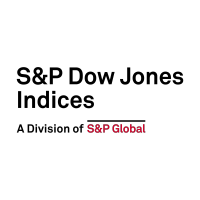Tag Archives: S&P 500 Low Volatility
Collections of Factors
Traditional investors think of portfolios (whether active or indexed) as collections of stocks. We can equally well think of portfolios as collections of factors—defining factor in the academic sense, as an attribute with which excess returns are thought to be associated. If we’re correct in assessing these attributes, it should be possible to explain portfolio…
- Categories Factors
- Other Tags
What Performance Reversals Suggest
Investment results in 2022 were distinctly different from those of the recent past. The S&P 500®, which had doubled in the three years between 2019 and 2021, fell by more than 18% last year, and Exhibit 1 shows that there were regime shifts among factor indices as well. The dominance of Value over Growth in…
- Categories Factors
- Other Tags
How Low Volatility Works in Challenging Markets
When does low volatility tend to outperform and why? S&P DJI’s Craig Lazzara and Invesco’s Nick Kalivas take a closer look at low vol performance in periods of rising rates and inflation, and explore what happens to risk/return when low vol is combined with other factors.
- Categories Factors
- Other Tags
Understanding the Low Volatility Anomaly
Take a deep dive into the low volatility anomaly as S&P DJI’s Craig Lazzara explains what the anomaly is, when and why it outperforms, and the role of dispersion in identifying potential opportunities.
- Categories Factors
- Other Tags
A Stalwart Delivers
U.S. equities struggled again in the past three months. The last rebalance for the S&P 500® Low Volatility Index was in August 2022 and the S&P 500 has since declined 7.0%. The S&P 500 Low Volatility Index, which has historically moderated the performance of the benchmark, lost 5.1% in the same period. For the entirety…
- Categories Factors
- Other Tags
- Categories
- Factors
- Other Tags
An Efficient, Rules-Based Approach to Factor Rotation
Explore how the design of the S&P 500 Factor Rotator Daily RC2 7% Index is helping democratize access to factor investing, providing a simple, rules-based blueprint for building dynamic factor strategies.
- Categories Factors, Multi-Asset
-
Other Tags
dynamic rebalancing, factor investing, Factor Rotation, indexing, Indexing insurance, low volatility, multi-asset, Multi-Factor, risk control 2.0, S&P 500 Enhanced Value, S&P 500 Factor Rotator Daily RC2 7% Index, S&P 500 Factors, S&P 500 High Dividend, S&P 500 Momentum, S&P 500 Quality, S&P Dow Jones Indices, U.S. Treasuries
- Categories
- Factors, Multi-Asset
- Other Tags
- dynamic rebalancing, factor investing, Factor Rotation, indexing, Indexing insurance, low volatility, multi-asset, Multi-Factor, risk control 2.0, S&P 500 Enhanced Value, S&P 500 Factor Rotator Daily RC2 7% Index, S&P 500 Factors, S&P 500 High Dividend, S&P 500 Momentum, S&P 500 Quality, S&P Dow Jones Indices, U.S. Treasuries
Happy Birthday to Low Vol and High Beta!
On April 4, 2011, S&P DJI launched two strategy indices, the S&P 500® Low Volatility Index and the S&P 500 High Beta Index. Ten years of live history let us compare how the two indices actually performed versus their pre-launch back-tests. Many investors take back-tested history with an understandable grain of salt. But even live…
- Categories Factors
- Other Tags
Comparing Defensive Factors During the Last 3 Bear Markets
In the factor world of investing, Low Volatility and Quality have been commonly referred to as defensive factors. The following is an examination of the performance of the S&P 500 Quality Index and the S&P 500 Low Volatility Index compared to the S&P 500 during the last 3 equity bear markets. The graphs and data…
- Categories Factors
- Other Tags
- Categories
- Factors
- Other Tags
A Stable Regime
In recent days the S&P 500 reached multiple new highs, despite the still-uncertain nature of the economy’s recovery from the COVID-19 pandemic. Year to date through Aug. 20, 2020, the S&P 500 is up 6% while the S&P 500 Low Volatility Index is down 6%. Market volatility remains high, as evidenced by the charts in…
- Categories Equities, Factors, Strategy
-
Other Tags
2020, defensive strategies, Factor, factor analysis, factor investing, factor-based strategies, Fei Mei Chan, Index Investment Strategy, low volatility, low volatility strategies, rebalance, risk management, S&P 500, S&P 500 Low Volatility Index, S&P 500 Sectors, sectors, smart beta, smart beta strategies, strategic beta, strategy index
- Other Tags
- 2020, defensive strategies, Factor, factor analysis, factor investing, factor-based strategies, Fei Mei Chan, Index Investment Strategy, low volatility, low volatility strategies, rebalance, risk management, S&P 500, S&P 500 Low Volatility Index, S&P 500 Sectors, sectors, smart beta, smart beta strategies, strategic beta, strategy index
Observing a Regime Change
In politics, “regime change” denotes the replacement of one governmental structure with another; in economics, we use the same term to indicate a shift in the interactions of various parts of the economic or financial system. Political regime changes are easy to identify (after all, a military coup is hard to miss). Defining when an…
- Categories Equities, Factors, S&P 500 & DJIA, Strategy
- Other Tags






